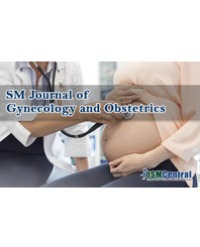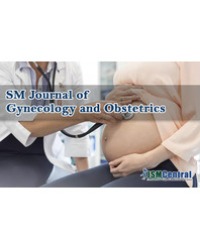
Punches and Knocks to the Physicians: Choosing Wisely or Self Protection?
In recent years, the “choosing wisely” campaign has been started to avoid unnecessary examinations, treatments and procedures on the patients.
Ugo Indraccolo1*


In recent years, the “choosing wisely” campaign has been started to avoid unnecessary examinations, treatments and procedures on the patients.
Ugo Indraccolo1*

Conventional prenatal screening tests for detection of Tri 21 are based on biochemical and sonographic measurements in first and second trimester with a 5% false positive rate and 60-95% detection rate
Ekmekci Emre¹, Demirel Emine¹, and Kelekci Sefa¹*

Background:
There is a periodic demand to discourage operative vaginal delivery, however clinical experience suggests that leaving everything to natural forces or scalpel does not accomplish the goal, thus making it an integral part of obstetric care worldwide.
Aims and Objectives:
The present study was aimed to compare the maternal and perinatal outcome in operative vaginal delivery and normal vaginal delivery.
Patients and Method:
It is a prospective study carried out on 200 pregnant women with full term pregnancies admitted in the labor ward of tertiary referral teaching hospital. The patients were divided into 2 groups of 100 each. Group I (Study group) included 100 women delivered either by outlet forceps (50 women) or silastic vacuum (50 women) and Group II (Control group) consisted of 100 women who had normal delivery. The maternal outcome measures were extension of episiotomy, cervical tears, vulval hematoma, altered fecal or urinary continence, perineal discomfort and dyspareunia. Perinatal outcome measures were Apgar score, injuries to newborn and admission to neonatal intensive care unit.
Results:
Maternal complications, extension of episiotomy (p=0.01, RR 2.71, 95% CI 1.19-6.17)), cervical tears (p=0.01, RR 10.0, 95% CI 1.30-76.67) and vulval hematoma (p=0.01, RR 5.00, 95% CI 0.59-42.04)) were significantly more in group I. Apgar score less than seven at five minutes was observed in 5% neonates in group I and none in group II. Neonatal injuries (scalp injuries, facial injuries, cephalhematoma) were seen in 25% cases in-group I and none in group II. 32% neonates in group I and 7% in group II were admitted in neonatal intensive care unit (p=0.00, RR 4.57, 95% CI 2.12-9.87). At three months postpartum the perineal discomfort was complained by 14% and 9% of women and 13% and 8% of the women experienced dyspareunia in the group I and group II respectively.
Conclusion:
Operative delivery cause more complications in both mothers and babies compared to normal delivery, but all these complications are minor in nature. So, instrumentation in the second stage of labor remains useful and alternative procedures to cesarean section, if applied judiciously. There is no difference in terms of perinatal and maternal outcome in forceps and vacuum delivery.
Savita Rani Singhal¹, Rakhee Goyal¹, Anju Huria Khosla¹, and Smiti Nanda¹*

Febrile abdominal pains in a patient with risk factors for pelvic inflammatory disease should alert clinicians to the possibility that the disease could evolve unfavorably toward the formation of a tubo-ovarian abscess, an entity that puts the patient’s life at risk. We present a case of severe form of pelvic inflammatory disease complicated by perihepatitis in a 26-year-old female having history of intrauterine device removed two months ago. Its rapid diagnosis and treatment can avoid long term complications.
Moukit M¹, El-Hassani M¹, Kouach J¹,², Moussaoui Rahali D¹,², and Dehayni M¹,²,³*

Aim:
To evaluate the epidemiological data of patients who underwent abdominal hysterectomy for benign diseases in a tertiary reference centre in the Southeast of Brazil.
Methods:
This retrospective study analyzed the medical records of patients who underwent abdominal hysterectomies for benign diseases between 2000 and 2012. The following epidemiological data were assessed: age, parity, marital status, ethnicity, Body Mass Index (BMI), previous surgeries, preoperative diagnosis, associated chronic diseases, type of surgery, postoperative complications, days of hospitalization and agreement between clinical and pathological diagnoses. For statistical analysis, the absolute and relative frequencies were used.
Results:
A total of 280 surgeries were performed in the given period. Most patients were aged between 41 and 45 years (33.2%), single (46.4%), of mixed ethnicity (47.9%) and had a BMI within a range of 20 to 24 kg/m2 . The most common preoperative diagnosis was uterine fibroids (54.6%), and the most prevalent chronic condition was arterial hypertension (53.5%). Furthermore, the procedure indicated and performed most often was total isolated abdominal hysterectomy (83.9% and 56.4%, respectively). Surgical time was below 2 h in 244 patients. Immediate and late complications comprised 17.5% of cases and urinary tract infection was present in 23.5% of cases. The preoperative diagnosis was confirmed by histopathology in 87.5% of patients. There were no deaths in the present study.
Conclusion:
Abdominal hysterectomy for benign diseases was proven to be a safe surgical procedure, albeit not without risk.
Sônia Jardim dos Santos Tavares¹, Edward Araujo Júnior², Flávio Augusto Prado Vasques¹, Bartolomeu da Câmara França¹, Carmen Lucia de Abreu Athayde¹, and Renato de Souza Bravo¹*